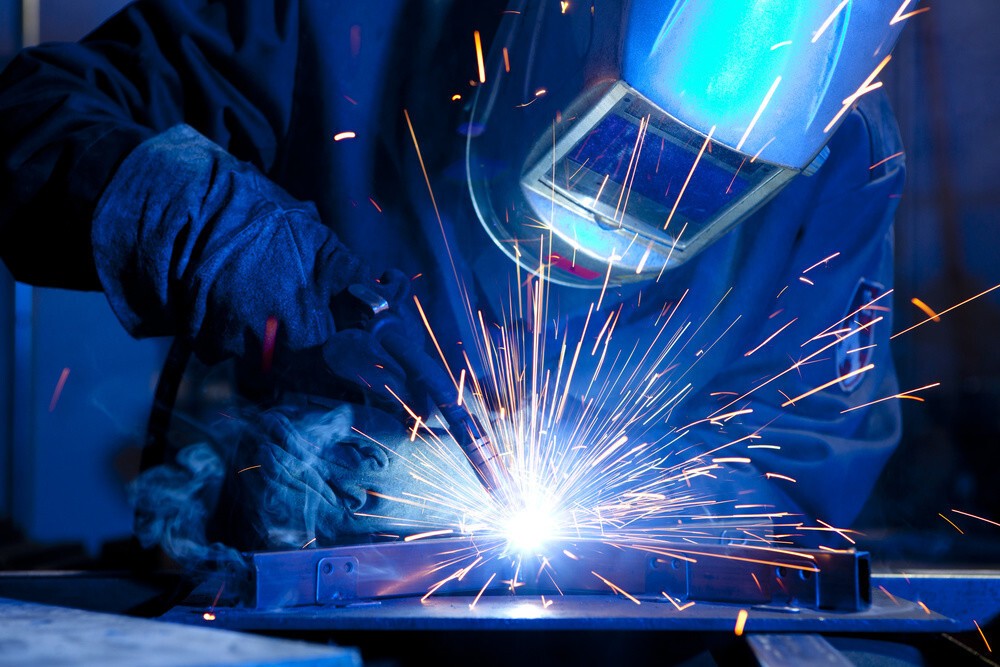There are many types and classifications of welding techniques and processes you will found, and instead of helping, you get confused about which one is suitable for you and your welding project.
Primarily, there are only a few types of welding processes, and the rest of them are taken from them. Among all, the most common and most used types of welding are arc welding and gas welding.
Arc welding and gas welding are being used for years, and over time, they are getting advanced.
To help in choosing the best welding method, you need to know the fundamental difference between them, and therefore, to address this issue, here in this article, we are going to talk about arc welding vs. gas welding briefly.

Table of Contents
An Overview of Arc Welding
Arc welding is one of the long-established forms of welding process and yet still popular among welders. Arc welding, to weld pieces of metals together, utilizes an electrical arc.
An electrical arc is generated by an electric power supply, and when it heats to a specific temperature, it melts down the electrodes or the base material to weld the joining points.
When an electrode starts to melt, it forms a shielding gas when combined with the oxygen from the environment; it protects not only the arc but also the welding area. When a melted pool cools down, it binds the metal together.
Arc welding can further be divided mainly into two types. The one is which uses the consumable electrodes, and the other one that uses the non-consumable electrodes. Other than the electrodes, arc welding can be done using the AC and DC current.
Arc welding is a manual process; moreover, it can be changed into a semi-automatic or fully automatic function with additional tools and equipment.
Mainly, the kit required for arc welding includes a power supply machine, welding rods, cables, clamps, and electrode holders. Domestic current works well with arc welding.
Other than that, the safety of a welder is most important, and for this, you need to have a complete set of personal protective equipment. Do not perform a welding process if you do not have a welding helmet, gloves, and eye protection glasses.
As arc welding produces high heat intensity, it is mainly used for thicker materials and heavy projects. From the construction of bridges to aircraft maintenance, the use of arc welding can be seen all over.
In addition to the high level of heat intensity, arc welding gives you high speed and as well as efficiency and quality weld.
When compared to other types of welding, arc welding pieces of equipment are readily available at an affordable price and easy to move from one place to another.
On the other hand, there are a few drawbacks to using the arc welding system. Firstly, it is not preferred for thin materials, as it can melt the material due to the high-intensity heat level.
Arc welding requires changing of electrodes from time to time, and it takes time and effort to do it in a proper way. Besides that, slag is produced, and therefore, finishing is required at the end.
An Overview of Gas Welding
Gas welding is a form of welding process that uses fuel gas to weld the materials. The flame torch is generated using a fuel gas with oxygen. The flame is then used to melt the filler material and the welding pieces; once it cools down, it binds the material.
The use of gas welding is mainly carried out where the reach of electric power is not possible or complex such as in underwater or remote places.
Gas welding is as much practical and effective as any other type of welding. It is a preferred choice for many industries and trades because of low-cost equipment and labor.
Different fuel gases are being used for gas welding, and when combined with oxygen, it creates a flame that can reach to a certain level of temperature.
The choice of fuel gas, therefore, depends on the heat intensity required on the basis of the particular welding project. Among all other fuel gases, the most common are acetylene and gasoline.
Gas welding requires you to have a separate chamber or tank in which oxygen and fuel gas can be mixed; other than that, it requires a welding torch and control valves to regulate the intensity of the flame. It is necessary to take care of the ratio of oxygen to the fuel gas.
One of the main benefits of gas welding is that it requires no electricity, and the equipment cost is also relatively low and is extremely portable. Besides that, it is easier to learn and practice.
Above all, with gas welding, you can weld ferrous and non-ferrous metals easily.
Summary
Both arc welding and gas welding are quite effective and reliable ways of welding, but there are a few limitations that come with gas welding.
No matter what fuel gas you may use, it cannot reach to the temperature, which can be achieved by arc welding; this makes the gas welding not suitable for thick materials or high strength steel.
In addition, the gas welding takes time to fully reach to the required temperature; this makes the whole process slower as compared to arc welding.
As far as safety and well-being are concerned, it is very important that you must take care of it whether using arc welding or gas welding.
The probability of risk remains the same in all types of welding, and therefore you should not proceed with the welding process until and unless you wear personal protective equipment.
To be more specific, gas welding requires you to take additional safety measures such as safety of gas cylinders, ensuring there is no leakage of fuel gas and exposure to the chemical.
Proper ventilation is required, and you should not use the gas welding equipment for a more extended period of time.
If you take care of the safety protocols and follow the standard procedure, you will be able to perform the welding process smoothly and effectively, whether you are using gas welding or arc welding.
